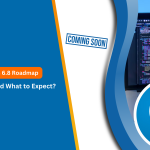If it is not apparent already, this is about the communication lines drawn between a web developer and the end-user. What is that supposed to mean? Let’s find out.
First things first, we need to realize that a web developer’s job isn’t easy. It’s probably one of the hardest things to pull off i.e. to come up with a website in line with what the customers want. Day in and day out, they are trying to figure out remedies for some of the most complex problems; working on multiple projects at once and dealing with a diverse user base from across the world. All in all; it’s not all sunshine and rainbows in a web developer’s world.
Size of a team
Because teams vary in size; the roles of individual members differ to a great extent. It is often seen that teams of small size implement only a handful of communication mediums whereas larger teams have multiple channels which is what increases the odds of loss of information or miscommunication in general.
Irrespective of the team size, project-related communication needs to be documented seamlessly. When it comes to this, the margins for error are too thin since everything is user-centric. This is what all WooCommerce web developers recommend as well.

See How Our Experts Can Drive More Traffic to Your Website!
SEO: Boost your rankings and drive more organic traffic today!
Website Design/Development: Create a stunning website that converts visitors into customers.
Paid Media: Reach the right audience at the right time with expertly managed paid media.
Now that we’ve stressed so much; let us get to the specifics:
What can be described as good communication?
Good communication depicts an effective exchange of information amongst the concerned entities. Such entities can’t only be individuals but project management tools as well. From social media comments to private e-mails and collaboration software, a cohesive team requires multiple forms of communication.
Popular Communication Mediums
These are the most popular communication mediums when it comes to a team indulging in project delivery:
- Voice conferencing
- Chat
- Face-to-face meetings
- Video conferencing
- Text messaging
- RSS feeds
- Direct e-mailing
- Social media
- Project management tools
All these communication channels serve a unique purpose and can often be combined and overlapped to improve the overall productivity of the process. Even if some of them might seem a tad unnecessary; they are key elements of functioning in a team largely inducing constructive workflow.
However, how do you draw the line between effective communication and overcommunication?
Active Vs. Passive Communication
The field of communication can be diversified into a lot of categories; however, active and passing communication is 2 broad segregations.
Active communication is the type where 2 parties are involved i.e. where the sender is expecting a response in return. Phone calls, Google Hangouts, and WhatsApp messenger are all forms of active communication whereas passive communication doesn’t involve direct replies.
An example of a passive communication instant is when collaboration software sends you a notification about a project delivery reminder. Now you’re not supposed to respond to this, but just know that the deadline is due to arrive soon.
Enough of the nitty-gritty though; let us look at some real-time situations and how web developers should handle them:
1) Acknowledgement of reception
Magento eCommerce developers need to understand the importance of the word ‘acknowledgment’ as that can be a real deal maker when it comes to dealing with eCommerce consumers and clients. Whenever you receive a task, just inform the concerned authorities that you’re simply ‘on it’.
Consider an instance wherein the client assigns a task to you and you’re available for immediate action.
What you should do here is inform the client right away that you are ready to take this up and move forward. Not just that, you send him/her a list of prerequisites that are critical and send over as many queries as you have about the incoming project.
Also, you should provide a list of tips, suggestions, and conditions that will be important to the continuity of the project.
Another instance is where you’re not available to get into something new immediately after being assigned a task by the client.
What you need to do here is diplomatically inform the client that you won’t be able to take it up immediately; however, ask them for some wiggle room if possible. You should in turn thank them for providing a new project opportunity.
Make sure you don’t cite any reasons or stories which will prove to be inconsequential really and increase complications. Be direct right away and inform about the status rather than stalling for quite some time.
2) Periodical updates about the project status quo
Often you find that WordPress developers for hire will be extra responsive and diligent before bagging the project. But once the work starts, they kind of go AWOL till the delivery. Now, if the task is a small one i.e. if it is supposed to be delivered in a couple of days; then such a lack of communication isn’t half bad as the deadlines are stringent.
However, if the project is a long one; such an approach can prove to be detrimental to project success. This is why regular updates are necessary about what’s going on, any pitfalls being suffered if the client requirements are falling in line with the project execution, and so on.
The status updates however should be as brief and concise as possible and the frequency shouldn’t be too often; as it becomes overboard. Include only relevant information which is important to the client and can be easily understood as well.
Another good point is to keep asking questions so that the quality doesn’t suffer and everything is mapped out. This way the client will not only start trusting you better but will develop a healthy rapport with you as well; which will help keep the accuracy quotient intact.
But what if you haven’t begun with the project and the client asks for an update?
Well, we’ve all been there, haven’t we? No one is proud of such a situation but you will go through this sooner rather than later. Here’s how you can end up saving face:
You can instantly begin with the project, pick up speed and then notify the client in the night about what the project status is. ‘Something is better than nothing, right? You can cite that you were busy researching and indulging in a little competitive analysis before proceeding so that you do justice to what the project entails.
You can also opt for the honesty road and tell the client that you were busy with something substantial or a prior personal commitment. On that note, you can inform the client that you will now prioritize this project henceforth.
Make sure you don’t end up lying to the client about the project’s progress because it might turn into something really ugly if you get caught. You may then get asked to send screenshots to substantiate your claim.
It’s about communication. It’s about honesty. It’s about treating people in the organization as deserving to know the facts. You don’t try to give them half the story. You don’t try to hide the story. You treat them – as true equals, and you communicate and you communicate and communicate.
– Louis V. Gerstner, Jr.
3) The C of Communication is ‘Concise’
You, of all people, would know the importance of time. Hence, avoid writing long notes or e-mails to the client, even if it is for the better. No one has the time anymore to read. Even if it sounds bitter; it is true.
Another sour aspect is the fact that long posts often tend to come off as a ‘cover’ for some anomalies. It can be labeled as overcompensation because you’ve not understood the project properly. Hence, make sure that you are concise irrespective of the communication channel. Always adopt a simplified and personalized tone in turn making the client feel comfortable and confident in your abilities.
You can also choose voice or video conferencing over posts or emails as you will be able to discuss things quicker and deeper, and a phone call never takes too much time. This will also get you two on the same page and develop a sense of professional camaraderie.
4) Timely notification about vacations, obligations, and personal commitments
This is kind of self-explanatory, isn’t it? If you’ve planned a vacation a long time ago before taking up the project, you need to inform about your exact plan whilst discussing the project before commencing. Also, ensure that you don’t take up any complex or time taking tasks knowing that you won’t be able to fulfill them in time. It’s better to stall those tasks rather than leave them in the middle.
You can also get the client in touch with a credible alternative whilst you’re away if things are too stringent or dire. Client satisfaction is the top priority here; so you need to be honest and responsible.
Health is something that can’t be controlled completely. If you’re in a situation where you’ve picked up an illness or need to go away due to some serious personal commitment, you need to inform the client timely using a mail or message citing the time you’ll be unavailable. This will yield a lot of respect for you from the client’s end.
Not everything can be under your control and sometimes, even the client can delay a project delivery by not giving you ample information in time, or changing the requirements way too often. In such a case, the delivery date is bound to suffer; however, you need to weigh out a few options before deciding the way forward.
a. How crucial is the project for your company in monetary and portfolio terms?
b. Has the client offered a really strict deadline or is there wiggle room present?
c. Can you reschedule your vacation plans without any financial strain?
d. Is there a worthy alternative present who has the same skill set as you?
e. Is this a first-time client who you can’t wait to impress or a long-standing one?
You need to consider a variety of parameters before you take the plunge. This helps if you’re being a little indecisive. Whatever you choose to do; remember to be honest with the client every step of the way. Even if the project gets delayed by a few days; the client will at least respect you for sticking to your word and communicating effectively.
5) What to do if the client is being unreasonable, impolite, and angry?
Well, the first thing you need to be wary of is to be calm and proactive. You need to keep your end clean so that no finger can be pointed toward you. Remember this is not a battle of adolescents but a handshake of professional adults in a polished capacity.
Don’t resort to the client’s level and keep your sophistication intact. Never be indecent on emails or messages especially; anything with a digital footprint. As this can be used against you if things go south.
Try to hear the client out about what the misgivings are, be patient, and above all; be a good listener.
If you master even a few of these skills and implement them in your everyday professional lives; the clients will well and truly love to work with you. Communication goes a long way in setting things right and building a solid relationship.
A joke here and there; a light discussion over coffee, wishing on birthdays, major holidays, and anniversaries; are some efforts which will put you in good stead. And so, even if it.








